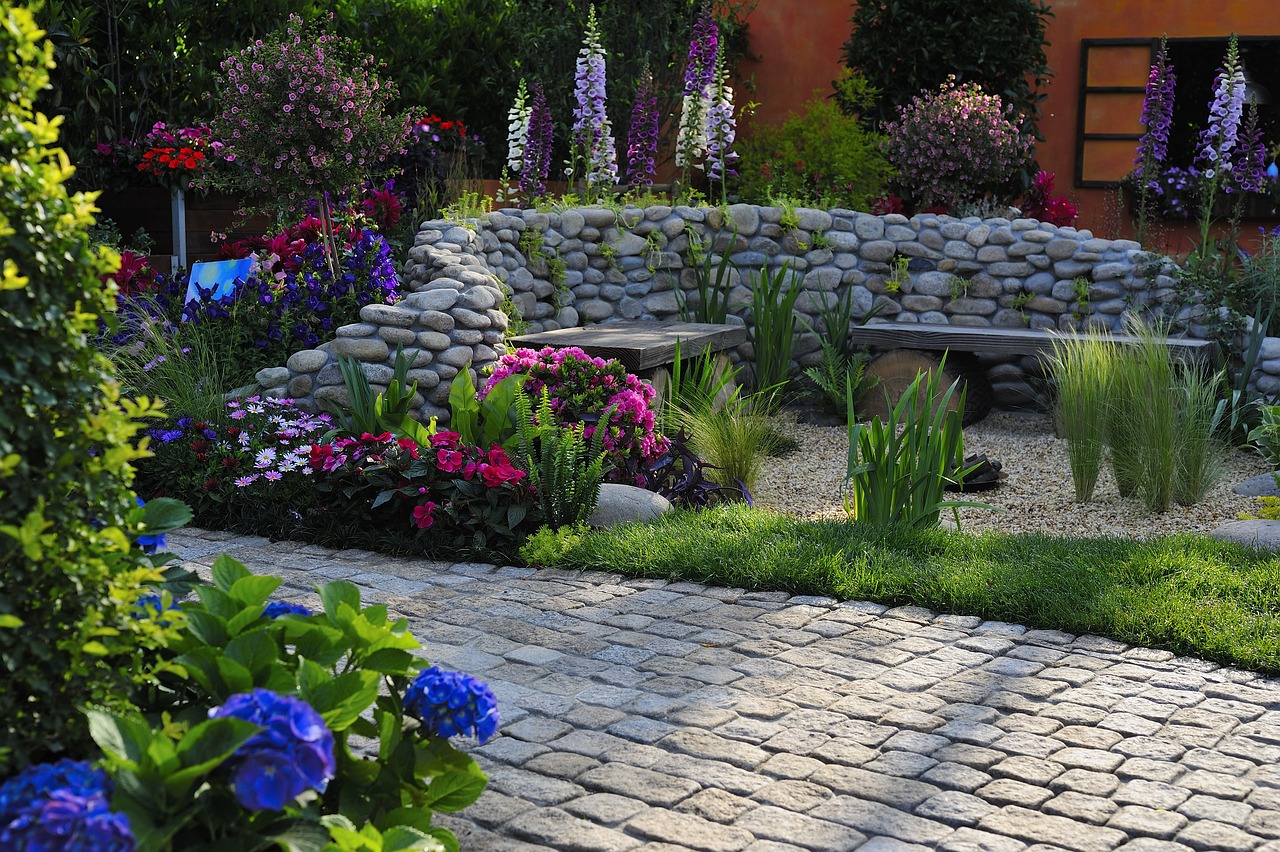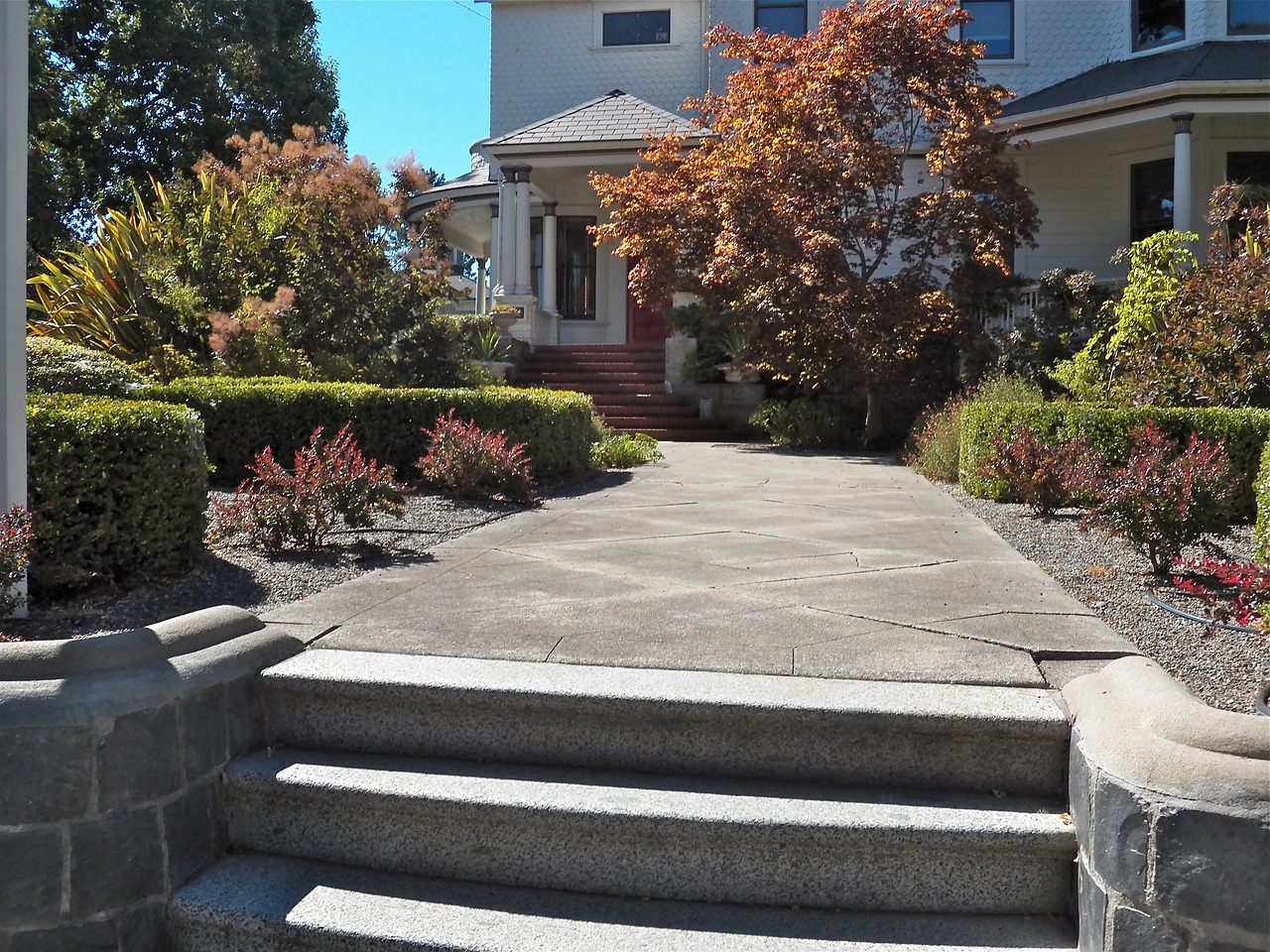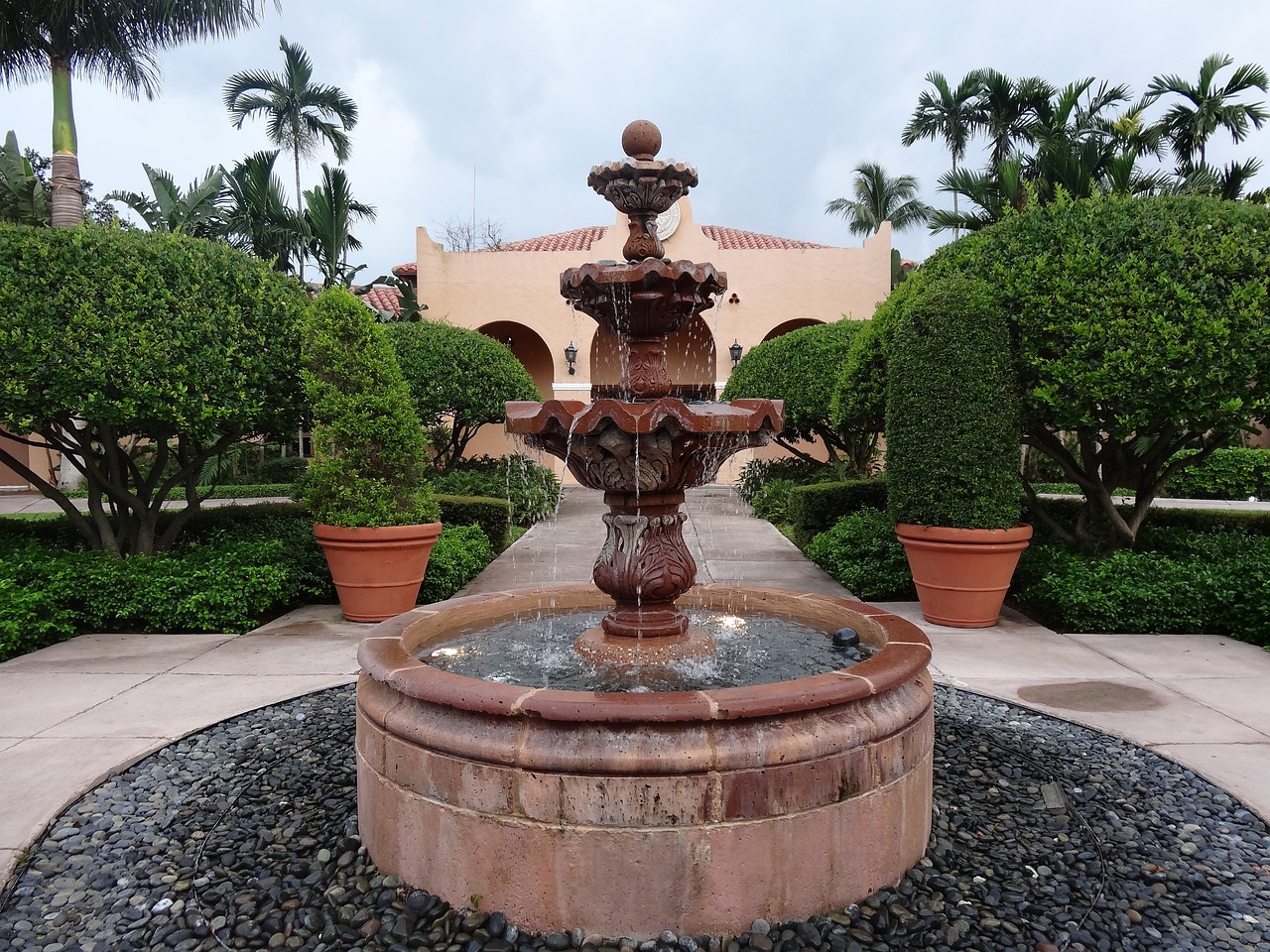The Art of Hardscaping: Adding Structure to Your Landscape

Hardscaping is a fundamental component of landscape design that encompasses all the non-living elements in your outdoor space. These structures provide the backbone of your landscape, creating definition, functionality, and visual interest. From pathways and retaining walls to patios and water features, hardscaping elements work in harmony with softscaping (plants and natural elements) to create a cohesive and appealing outdoor environment.
Benefits of Hardscaping
Incorporating hardscaping into your landscape design offers numerous advantages:
- Durability: Withstands weather conditions and heavy use
- Low Maintenance: Requires less upkeep compared to plants
- Increased Property Value: Enhances curb appeal and outdoor living spaces
- Erosion Control: Helps manage water runoff and prevent soil erosion
- Defined Spaces: Creates distinct areas for different activities
- Year-round Appeal: Maintains structure and interest in all seasons
- Reduced Water Usage: Decreases the need for irrigation in certain areas
Common Hardscaping Materials
The choice of materials significantly impacts the look, durability, and cost of your hardscaping project. Here’s a comparison of popular hardscaping materials:
| Material | Durability | Maintenance | Cost | Aesthetic Appeal |
|---|---|---|---|---|
| Natural Stone | High | Low | High | High |
| Concrete | High | Low | Medium | Medium |
| Brick | High | Medium | Medium | High |
| Wood | Medium | High | Low | High |
| Gravel | Medium | Medium | Low | Medium |
Designing Pathways and Walkways
Well-designed pathways and walkways are essential elements in landscape architecture, guiding movement through your outdoor space and creating visual interest. These hardscape features not only serve a practical purpose but also contribute significantly to the overall aesthetic of your landscape.
Choosing the Right Materials for Pathways
Selecting the appropriate materials for your pathways is crucial for both functionality and style. Consider the following factors:
- Durability: Ability to withstand foot traffic and weather conditions
- Safety: Non-slip surface, especially when wet
- Maintenance: Ease of cleaning and repair
- Style: Compatibility with your home’s architecture and landscape design
- Budget: Initial cost and long-term value
Popular materials for pathways include:
- Flagstone: Natural, durable, and visually appealing
- Brick: Classic look with various pattern options
- Concrete Pavers: Versatile and cost-effective
- Gravel: Informal and permeable
- Wood: Warm and natural appearance, suitable for garden paths
Layout and Design Tips
The design of your pathway can significantly impact the flow and feel of your landscape:
| Layout Style | Description | Best Used For |
|---|---|---|
| Straight | Direct and formal | Main entrances, contemporary designs |
| Curved | Relaxed and natural | Garden paths, informal landscapes |
| Stepping Stones | Whimsical and versatile | Light traffic areas, gardens |
| Geometric | Modern and structured | Contemporary landscapes, formal gardens |
| Meandering | Exploratory and organic | Large gardens, naturalistic designs |
Key design tips:
- Ensure paths are wide enough for comfortable passage (typically 3-4 feet for main walkways)
- Consider the flow of traffic and connect key areas of your landscape
- Use curves to create interest, but avoid sharp turns
- Incorporate lighting for safety and nighttime appeal
Building Retaining Walls

Retaining walls are structural marvels that serve both functional and aesthetic purposes in landscaping. These walls hold back soil, creating level areas in sloped landscapes and preventing erosion. When designed thoughtfully, retaining walls can also become striking focal points in your outdoor space.
Types of Retaining Walls
There are several types of retaining walls, each suited to different landscape needs:
- Gravity Walls: Rely on their own weight to hold back soil
- Pros: Simple construction, suitable for low heights
- Cons: Limited height capacity, requires more material for taller walls
- Cantilevered Walls: Use a reinforced concrete base for stability
- Pros: Can be built higher than gravity walls, uses less material
- Cons: More complex construction, requires professional engineering for tall walls
- Anchored Walls: Use cables or other anchors driven into the soil behind the wall
- Pros: Can handle extreme loads and heights
- Cons: Most complex and expensive option, requires extensive excavation
- Geogrid Reinforced Walls: Use layers of geogrid material to reinforce soil behind the wall
- Pros: Can be built to significant heights, relatively cost-effective
- Cons: Requires careful installation and compaction of backfill
Design and Installation Tips
Building a retaining wall requires careful planning and execution:
| Step | Description | Key Considerations |
|---|---|---|
| Planning | Determine wall location and height | Check local building codes, consider drainage |
| Excavation | Prepare the base | Ensure level ground, proper depth |
| Base Construction | Lay the foundation | Use gravel or crushed stone for drainage |
| Wall Construction | Build the wall | Follow manufacturer guidelines, maintain level courses |
| Backfilling | Add soil behind the wall | Install drainage material, compact layers properly |
| Finishing | Cap the wall, add landscaping | Choose complementary plants, consider lighting |
Essential tools for building a retaining wall:
- Shovel and spade
- Level and string line
- Tape measure
- Rubber mallet
- Plate compactor
- Masonry saw (if using concrete blocks)
- Safety gear (gloves, goggles, dust mask)
Creating Patios and Outdoor Living Spaces
A well-designed patio transforms your backyard into an extension of your home, providing a versatile space for relaxation, entertainment, and outdoor living. Patios enhance your property’s value and create a seamless transition between indoor and outdoor environments.
Selecting Materials for Patios
Choosing the right material for your patio is crucial for both aesthetics and functionality:
- Concrete: Versatile and cost-effective
- Stamped concrete offers various design options
- Can be colored or textured to mimic other materials
- Pavers: Durable and easy to replace if damaged
- Wide variety of colors, shapes, and sizes available
- Can create intricate patterns and designs
- Natural Stone: Elegant and unique appearance
- Options include flagstone, slate, and limestone
- Each piece has a distinct character and color variation
- Brick: Classic and timeless appeal
- Available in various colors and patterns
- Durable and low-maintenance
- Tile: Sleek and modern look
- Suitable for covered patios or dry climates
- Wide range of colors and designs available
Design Ideas for Patios
Creating a functional and aesthetically pleasing patio involves careful consideration of layout and features:
| Patio Feature | Description | Benefits |
|---|---|---|
| Fire Pit | Focal point for gathering | Extends outdoor season, creates ambiance |
| Outdoor Kitchen | Cooking and dining area | Enhances entertainment capabilities |
| Pergola | Partially covered structure | Provides shade, defines space |
| Water Feature | Fountain or small pond | Adds soothing sounds, visual interest |
| Built-in Seating | Benches or low walls | Maximizes space, creates cohesive design |
Design tips for patios:
- Consider the scale of your outdoor space when planning the patio size
- Create distinct zones for different activities (dining, lounging, cooking)
- Incorporate curves or angles to add visual interest
- Use contrasting materials or patterns to define different areas
- Include appropriate lighting for nighttime use and ambiance
Incorporating Water Features

Water features add a dynamic and soothing element to your landscape, creating visual interest and masking unwanted noise. From simple fountains to elaborate ponds, water features can transform your outdoor space into a tranquil oasis.
Types of Water Features
Various water features can enhance your hardscape design:
- Fountains:
- Benefits: Easy to install, available in various sizes
- Considerations: Regular cleaning, water replenishment
- Ponds:
- Benefits: Creates a natural ecosystem, supports aquatic life
- Considerations: Requires more space, ongoing maintenance
- Waterfalls:
- Benefits: Adds vertical interest, soothing sound
- Considerations: Needs proper slope, may require professional installation
- Streams:
- Benefits: Creates a naturalistic look, can connect different areas
- Considerations: Requires careful grading, potential for leaks
- Wall Fountains:
- Benefits: Space-efficient, can be a focal point
- Considerations: Needs nearby power source, regular cleaning
Installation and Maintenance Tips
Proper installation and maintenance are crucial for the longevity and beauty of your water feature:
| Task | Frequency | Tips |
|---|---|---|
| Clean Filters | Weekly | Rinse thoroughly, replace as needed |
| Check Water Levels | Bi-weekly | Top up to compensate for evaporation |
| Clean Algae | Monthly | Use appropriate treatments, scrub surfaces |
| Inspect Pumps | Seasonally | Clean impellers, check for wear |
| Winterize | Annually | Drain or use de-icers in cold climates |
Key installation considerations:
- Ensure proper drainage and water circulation
- Use high-quality, waterproof materials
- Install adequate lighting for nighttime enjoyment
- Consider the view from different angles in your landscape
- Plan for easy access for maintenance
Lighting for Hardscape Elements
Effective lighting design enhances the beauty of your hardscape features while improving safety and extending the usability of your outdoor space into the evening hours. Well-planned lighting can create ambiance, highlight key features, and guide movement through your landscape.
Types of Hardscape Lighting
Different lighting techniques serve various purposes in hardscape design:
- Path Lights: Illuminate walkways and borders
- Spotlights: Highlight specific features or plants
- Step Lights: Enhance safety on stairs and level changes
- Underwater Lights: Illuminate ponds and water features
- Wall Washers: Create dramatic effects on vertical surfaces
- String Lights: Provide ambient lighting for entertaining areas
- Bollard Lights: Define boundaries and provide area lighting
Design and Placement Tips
Effective lighting design requires careful consideration of placement and intensity:
| Hardscape Element | Lighting Technique | Effect |
|---|---|---|
| Retaining Walls | Grazing lights | Emphasizes texture, creates depth |
| Patios | Overhead string lights | Creates a cozy atmosphere |
| Water Features | Submersible lights | Highlights water movement |
| Pathways | Low-level path lights | Guides movement, enhances safety |
| Trees and Shrubs | Uplighting | Adds drama and dimension |
Lighting design tips:
- Use a mix of lighting types for a layered effect
- Opt for warm white light (2700-3000K) for a natural, inviting glow
- Consider using LED fixtures for energy efficiency and longevity
- Implement lighting controls for flexibility (timers, dimmers, smart systems)
- Avoid over-lighting; subtlety is key in landscape lighting
By thoughtfully incorporating these hardscaping elements and techniques, you can create a stunning and functional outdoor space that enhances your property’s value and your enjoyment of your landscape. Remember to consider your overall design aesthetic, maintenance requirements, and budget when planning your hardscaping projects. With careful planning and execution, your hardscape features will provide structure, beauty, and functionality to your landscape for years to come.
